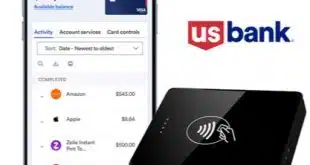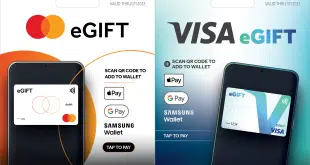Using a three-pronged technology play that includes enabling consumers to share merchant offers through social media, Boston-based SCVNGR Inc.’s mobile-payments unit LevelUp has added 500,000 new consumer users in just the past four months, bringing its total user base to 1 million.
The strategy is part of a larger plan to transform LevelUp from a payment product to a payments and loyalty platform, according to chief executive Seth Priebatsch. “These moves were intended to bring more merchants, and subsequently, more users into the LevelUp ecosystem,” Priebatsch tells Digital Transactions News. “Our user base is skyrocketing as a result.”
One tool receiving a favorable reception from consumers is a Facebook integration application that enables LevelUp users to receive offers and coupons sent via the huge social network. LevelUp users can forward an offer to a Facebook friend and recipients can download it to their LevelUp wallet on their mobile phone by clicking on the “Claim This Offer” button in the offer.
So far, offers made available through Facebook are averaging 1,000 views, and are downloaded by an average of five LevelUp users. Of those five users, up to two redeem the offer 14 to 30 days after downloading it. “This feature has made social media a viral hot spot for us,” says Priebatsch.
Consumer redemption of LevelUp coupons and offers is central to the provider’s business model. LevelUp, which mobile-game developer SCVNGR launched in July 2011, doesn’t charge interchange even though consumers fund their LevelUp wallets with a credit or debit card, with the app displaying a bar code to complete a purchase. Instead, LevelUp earns merchant fees of 35 cents per dollar on incremental sales generated by the redemption of rewards earned by its customers.
The second prong of LevelUp’s strategy has been sharing its application programming interface (API) codes with merchants wanting to create their own branded mobile- payments application. Merchants using LevelUp’s API are charged $40,000 to $60,000 for each mobile-phone operating system for which they develop an app, such as Apple Inc.’s iOS or Google Inc.’s Android.
Among the features merchants can load into their mobile app is the ability to direct a pre-determined percentage of transactions to a charity. So far, about 20 of LevelUp’s 5,000 merchants (up from about 1,200 a year ago) have opted to purchase its API.
While the cost for accessing LevelUp’s API is too expensive for mom-and-pop merchants and small chains, Priebatsch says it is a more economical solution for larger merchants than developing their own mobile app from scratch.
“The white-label approach opens up the opportunity for merchants that want a mobile app to create one at a cost much lower than if they developed their own app,” he says. “It can cost merchants a million or more to build their own mobile infrastructure. The white-label approach also gives merchants control over the branding of the app.”
The final piece of the puzzle is a loyalty migration tool that allows merchants to link their existing loyalty programs to the LevelUp wallet. Existing points and rewards follow the customer, and new merchant rewards or loyalty points are automatically downloaded to a LevelUp customer’s wallet with each purchase at a merchant in whose loyalty program they are enrolled. LevelUp users also can redeem loyalty points at the point of sale.
Merchants can access real-time analytics on individual loyalty program members to track their shopping behavior, what stores they frequent and demographic data, as well track cross-merchant behavior at the batch level for enrolled customers.
“Our loyalty-migration tool is a way for merchants to streamline how they interact with consumers though their loyalty program, because the consumer no longer has to remove the loyalty card from their wallet and swipe it at the point of sale,” says Priebatsch. “The capabilities we are offering are not possible with older loyalty programs.”





